#Network Rail contract
Explore tagged Tumblr posts
Text
British Steel Wins £500m Rail Contract to Secure Jobs and Industry
Landmark Deal to Safeguard UK’s Steelmaking Future British Steel has secured a landmark £500 million contract with Network Rail, ensuring the production of over 337,000 tonnes of train tracks over the next five years. The deal represents a significant vote of confidence in the future of the Scunthorpe steelworks, the last remaining site in the UK capable of producing virgin steel. The…
#blast furnaces#British Steel#infrastructure projects#Jingye#manufacturing#national security#Network Rail contract#Scunthorpe#steel industry news#steel jobs#steelmaking UK#UK economy 2025#UK government intervention#UK railways#virgin steel
0 notes
Text
Yandere manager who was never gonna let you get famous.
Nsfw for this one! MDNI!
Warning for noncon/dubcon!
Yandere manager who holds a high position in a prestigious entertainment company. He works with so many prolific stars, so he's surprised that your pitiful little portfolio ever even made it to his desk. You've got no experience, no connections, and you're not exactly industry standard in terms of beauty.
Yandere manager thinks it's kind of funny that a cute little thing like you thinks they can make it in such a cutthroat industry. he's kinda curious about what you're like though, so he calls you in for an interview. He can't help his large, sleazy grin that forms on his face when you sit there in his office stuttering through an introduction.
Sure he'll hire you, but you've gotta get on your knees.
Yandere manager feels a sick thrill run up his spine as he goes over contract details while your pretty little lips are spread around his cock. Your eyes are filled with tears, and he can feel your little whines and sobs vibrate in the back of your throat, and he groans. He has to admit it, you've got that special something about you that certainly has him captivated.
"Looks like we've got ourselves a deal, sweetie," He grunts out playfully and signs his name as he forces your head down further and came down your throat.
Yandere Manager who only books you for enough gigs for you to justify staying with him. He makes you fuck him whenever he asks, and whenever you want an actual job, you have to do something more extreme to get it. A modeling gig? Yeah sure babe. You've just got to dress super slutty and let him take you in the middle of a crowded club.
Yandere Manager who rails you violently whenever he catches you trying to network. He bets you think you're so smart and clever for chatting up some pervy, old director to get a spot in a music video. Does he not give you enough? You don't need all that attention unless he's giving it to you. You don't even know how many people are gonna wanna bury themselves in that tight little hole of yours, how many people would take advantage of you. At least with him, you knew what you were getting.
You're fucked so thoroughly, and Yandere manager loves watching you stumble around after he's stuffed you full of cum. He's started making you wear plugs afterwards just so he can watch the discomfort on your face as he takes you out shopping or for meals.
Yandere manager starts to feel a bit fond of you in not just a carnal way. As much as he loves seeing your cute little asshole twitch and stretch around the toys he pushes in you, he also likes seeing you smile, hearing you laugh. He likes the way your eyes light up when he allows you to do a photo shoot. He starts liking the way you shudder and squeal when you orgasm, too.
He's not a sappy guy by any means. Really, he sucks. Even he knows that, but maybe now that you've got his initials tattooed on your plump, well spanked ass cheeks, he can start making you like him too.
He's gross, and he knows it. But he loves fucking you so much he can't find it in himself to care. I mean you're not going to get away when he's got you coming back to him with the promise of success that he's never ever gonna let you have. Not for the risk of his favorite, cute little fucktoy leaving him.
#my writing#yandere x reader#yandere#yandere x you#x reader#tw yandere#yandere male#fanfic writing#my ocs#yandere manager
2K notes
·
View notes
Note
I might be asking the wrong person here, but why is the Acela so expensive? I need to travel from Boston to DC for a week for work so I compared costs and convenience of driving, flying, and taking the Acela and was surprised to find that the Acela costs more than flying (I was able to find round trip flights BOS-DCA for about $170, the Acela starts at about $140 each way) despite being significantly slower. Why does it cost so much?
I will concede that the Northeast Regional is cheaper than flying (about $60 each way), but it's also even slower than the Acela.
The Acela has several problems compared to analogous systems in other countries, and as a business problems mean costs and costs means prices.
Making a direct comparison to air travel also requires talking a little bit about the economics of air travel, since there are surprising number of weird things about that business compared to rail.
Part 1. Amtrak doesn’t own most of its own tracks. While it does own most of the North East Corridor, it leases track rights for the boston-providence leg from ME MOTHERFUCKER I’M THE PROBLEM and also the states of NY and CT own a section between NYC and New Haven. Now, when you are trying to have trains at up to 160mph, you need maintenance to be done within extremely tight tolerances, you need signaling to be extremely precise and consistent, and small mistakes can be deadly. Signaling and Maintenance on rented tracks are not literally impossible but they are a huge pain in the ass. These sections are slower and make the whole network much more expensive.
Part Two! Electification: this is one of the oldest rail corridors in the world and that means there’s a lot of old DNA in the network that it would not have if there was a full rebuild. One of these design “features” is that when the line was built, electricity wasn’t standardized and different plants would churn out different voltages and AC frequencies.
Between NYC and Washington there is a catenary system that operates at 11kv, 25hz that was built in 1905. This is insane. The modern grid runs at 60hz, and transforming power from a modern plant into 11kv, 25hz is a huge project in and of itself. But of course, the Boston to Providence section, electrified in 1990, has only the most cutting edge technology. It’s electrified with 60hz, 12.5kv, 10 years ahead of its time which was 35 years ago. And, when the Acela was first planned and operated in 2000, it was planned and operated with the now modern standard of 60hz, 25kv. So there are three different electrification systems and, to not have to switch trains, each train needs to be able to run with all 3 of them.
This is deeply stupid and only something you would have to deal with if you were hacking together increasingly expensive short term repairs onto a system that would be cheaper in 20-50 years to completely overhaul but in the present would cost 10s of billions to meaningfully bring up to 20th century operating standards. It’s a good thing we did the smart thing in the 1970s when Amtrak nationalized the collapsing private passenger rail companies and Conrail nationalized the collapsing freight rail companies and we recognized that running these crucial services with public money could generate huge amounts of economic activity and benefit society even if they ran at a fiscal loss, and properly funded the systems to build reliable and interoperable infrastructure for the next generation. Hold on I have to take this phone call.
………….
Yep.
…………..
Yeah ok.
…………..
They did WHAT?
Part Three: Ronald reagan is not dead enough
So yeah the main reason that none of this shit got fixed in the last 50 years is that for 4 successive administrations between Reagan and Bush 2 electric boogaloo the government has been slobbing on that Neoliberal knob like its subsidized corn on a subsidized cob. Private operators immediately saw the potential for infinitely lucrative federal contracts when the US seized the assets of Erie Lackawanna and Penn Central during their bankruptcy and formed Conrail. This was mainly Norfolk southern and CSX, former competitors who pushed hard for the reagan, bush, and clinton organizations to refurbish the lines at taxpayer expense before selling them to absolute corporate bottomfeeders so they could snap up lines that had been the main sources of revenue for these defunct companies at kleptocratic rates. But we’re not done. Freight companies hate two things more than even paying taxes, and these are OSHA and Passenger rail.
You see, it’s actually very hard to run freight and passenger on the same tracks. Freight is slow with long trains, long sidings, and loose schedules. Freight is optimized to get there, you know, sometime as cheap as possible. However, if you have passenger rail, those people have places to be. They need things like advanced signaling to move faster than 15 miles an hour, sidings long enough to pass at speed, and even, gasp, rails that don’t have holes in them so they don’t derail on corners. It’s not hard for a freight train to move along a track that is 85% rust, they just go slow and if they derail you’re only looking at maybe 2 superfund sites. But passenger rail, there will be bumps and passengers will complain. Customers are so unreasonable.
So when the federal government acquired all the tracks that became conrail, what did they do? Cut sidings, cut double tracks down to single tracks, cut maintenance, sold land. None of these bothered their future freight owner-operators. But they did undermine American passenger rail, on purpose, for 50 years. As soon as the work was done, the tracks were unfit for anything other than 400 box trucks of nitroglycerin pulled by two locomotives with one operator. How do you run passenger rail on that? Well, you play by CSX and Norfolk Bastard’s rules. Fuck your schedule. Fuck it slow. Fuck it for so long that it hurts. And, when you’ve bled enough revenue, complain to the federal government that you can’t possibly keep going and need to be sold off to private equity for parts.
So yeah. Freight rail in the 70s, the ruthless march of neoliberal capitalism, a frankenstein’s monster of a network, and a complete lack of revenue from either public subsidy or ridership to fix either problem.
Oh and there’s the fact that every single Major airline operates their flights at a loss and use credit cards as their primary source of income. The scheme is you take out a credit card, they run like a normal credit card company, except whereas most banks give you cash back they give you “miles” or “points” the vast majority of which will never get spent. It’s almost a license to print money as long as you have enough people you can convince will someday be able to afford to go on vacation with that fancy credit card they paid for. Budget Airlines who don’t run this scheme are folding both in the sense that they are going under financially and also in the sense that you better hope that your spine lets you compress into the overhead compartment if you want to get to your destination.
66 notes
·
View notes
Text
Welcome to my Expanded TF2 Universe
An industrial chessboard where war, commerce, and silence are traded like currency.
Intercorporate Dynamics

RED & BLU are rival private armies, supplied directly by Mann Co.
PRP is a front company owned by Mann Co., tasked with recruiting and managing mercenaries.
GURN (GRN) is the omnipresent radio network — broadcasting every win, loss, and death.
YLW, TRQ, and ORANG handle cargo logistics: sea, rail, and air respectively, and deliver weaponry from Mann Co.
PNK specializes in domestic parcel delivery, often working alongside TRQ and YLW.
All parties are connected — whether they know it or not.
Redrick Hook – Senior Commander of RED
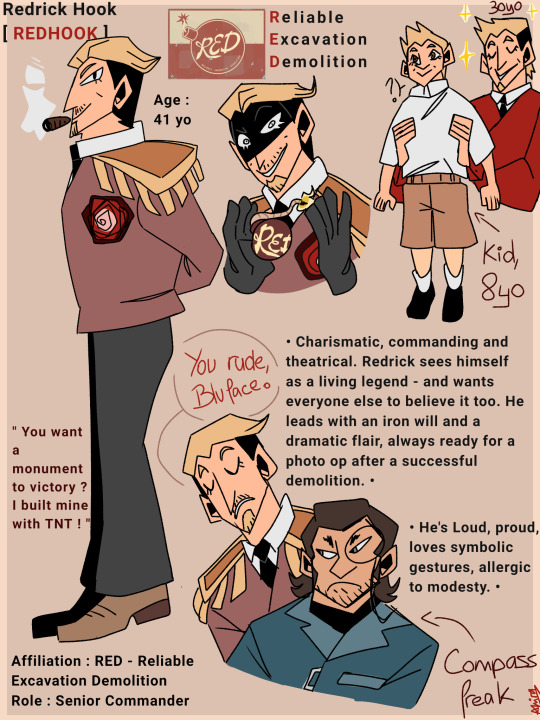
A larger-than-life demolition legend with a flair for the dramatic. Redhook leads RED with fire, steel, and a love for explosive symbolism. He sees war as theatre — and he’s always center stage.
Jack Blue– Corporate Strategist of BLU
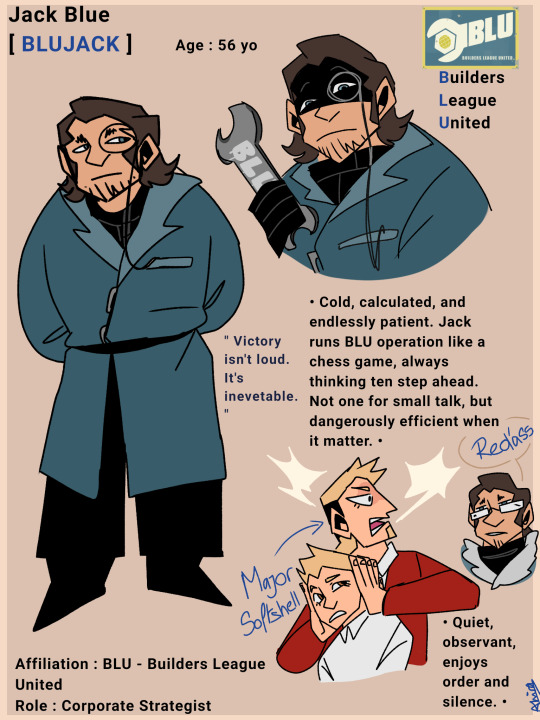
Cold and precise, BluJack plays global conflict like a game of chess. He is the mind behind BLU's quiet dominance and is never caught off-guard. Every move is calculated, every loss, tolerable.
Stewart Gurn– Operator at GRN
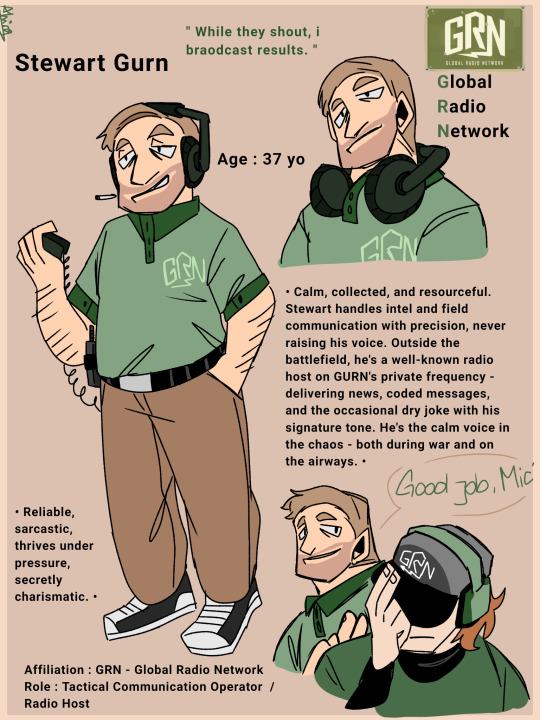
Stewart is the voice in your ear when everything goes wrong. Running battlefield comms and intelligence feeds, GRN is the lens through which RED and BLU are observed. They broadcast. They archive. They never interfere — officially.
Harold Yurlow – Logistics Captain of YLW
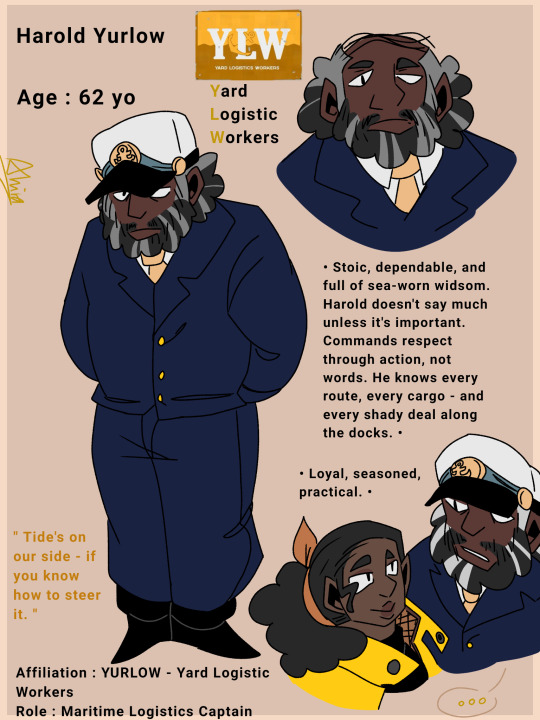
He rules the docks with silence and experience. Harold is an old sea captain whose ships carry Mann Co. weapons and confidential cargo to any warzone with a harbor. His motto: don’t talk, just sail.
Silvia Pelime – Chief Secretary at PRP

Officially a secretarial firm. Unofficially a covert R&D and tactical contract supplier. Silvia is brilliant, ruthless, and entirely loyal to progress — not people.
The Announcers – Voices of the War

They are the narrators of death, delivered through GRN's satellites. These disembodied voices report every capture, kill, and objective shift. They are consistent. Impartial. And a little too invested.
PRP Staff – The Mercenary Middlemen

Acting as intermediaries between Mann Co., RED, and BLU, PRP's agents Daisy and Stacy maintain contracts, monitor loyalty, and occasionally clean up… accidents. You never see them — unless you’re meant to.
GURN – Global Radio Network
The invisible web tying all major factions together. GRN manages battlefield reporting, public broadcasts, and confidential surveillance. From city towers to desert outposts, GRN is always listening.
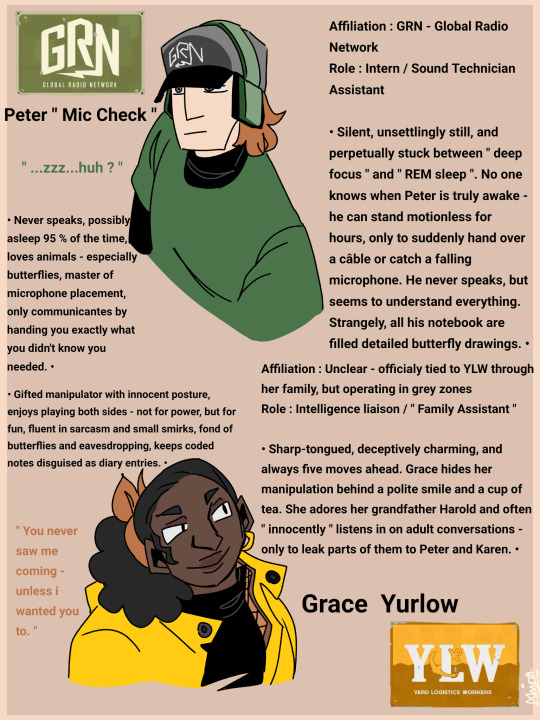
YURLOW – Maritime Transport
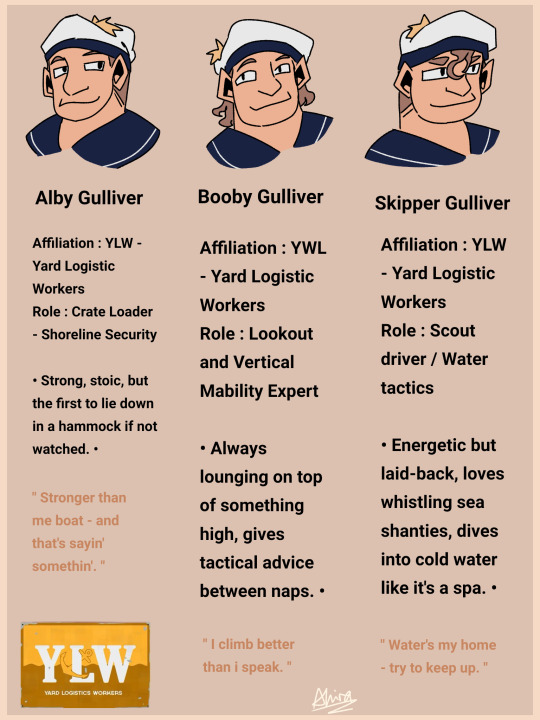
Delivering freight — and secrets — by sea. Booby, Alby, and Skipper keep the ocean supply lines flowing, navigating storms, pirates, and questionable customs checks with equal discipline.
ORANG – Aerocargo Firm
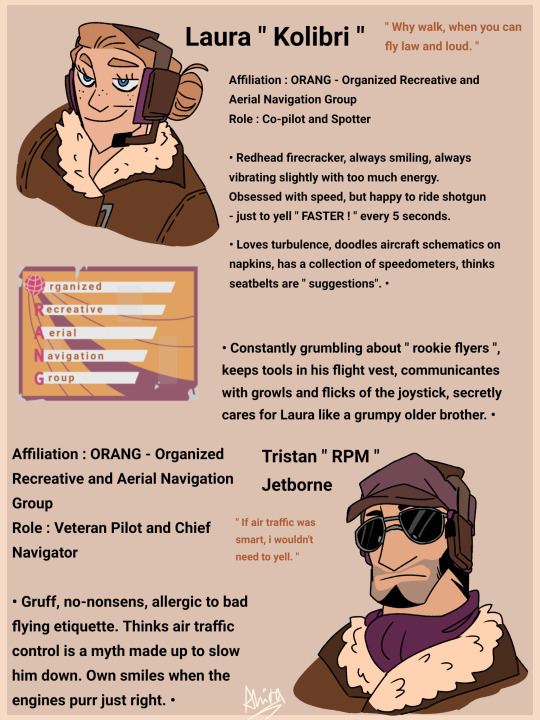
Aerial shipments for high-speed, high-risk jobs. Laura and Tristan fly dangerous routes for dangerous clients. Their cargo isn’t always legal, and the skies aren’t always friendly.
TRQ – Train Rail Quarter
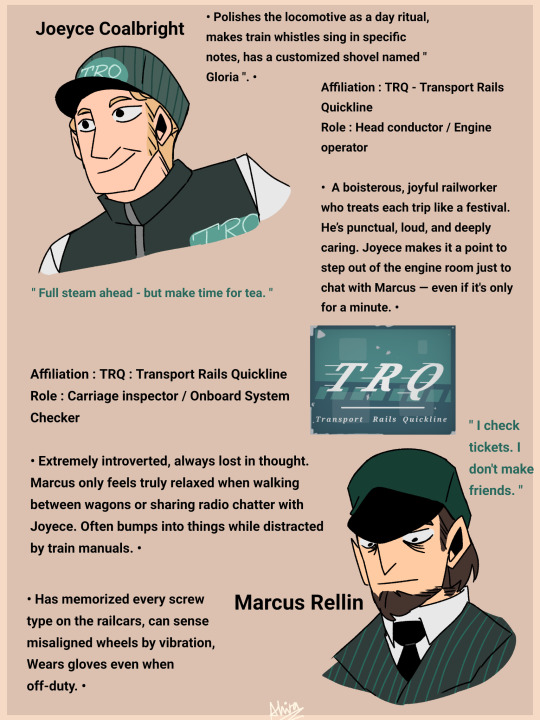
The last bastion of rail delivery, manned by Marcus and Joyece — two unlikely companions who keep trains moving through conflict zones, sabotage attempts, and loneliness. Old-school, iron-hearted transport.
PNK – Domestic Parcel Division
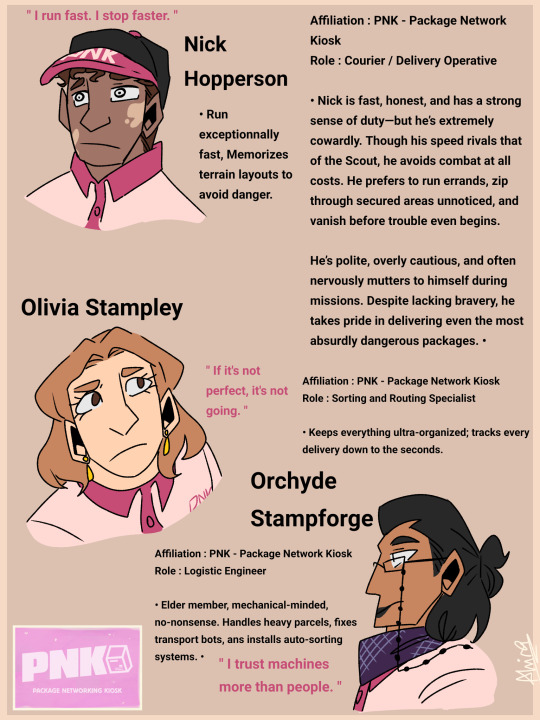
Nick, Olivia, and Orchyde run the internal delivery network. What they lack in battlefield strength, they make up for in precision, speed, and organization. Packages, intel, parts — they always arrive on time.
#digital art#tf2 ocs#tf2 oc#tf2 oc art#tf2 red team#tf2 blu team#tf2 lore#tf2 au#tf2 au art#tf2 fic#tf2 ylw#tf2 grn#oc#ocs#team fortress 2#team fortress 2 oc#team fortress 2 original character#mann co
20 notes
·
View notes
Text

— rose
Phillip Graves x f!reader
rated e - 1, 251 words
tags: medieval au, both Graves and reader are assassins from rival factions, brief mention of injury and tending to it, friends to enemies to lovers
prompt: my favorite quotes and moments that I can't get out of my head from These Violent Delights and Our Violent Ends by Chloe Gong with a COD inspired twist.
dividers: saradika graphics
Two rival assassin factions and forbidden love

The Shadows and The 141. Two elite assassin guilds that were always out for blood with each other. Scrambling to expand territory or recruiting numbers. Fighting in the streets or in war rooms over the latest contracts. As heir to the 141 task force, you were no stranger to it.
The last day replayed in your mind on a loop, as if it could somehow explain your current situation and even stranger company.
"I certainly hope you are not going to make me go to the masquerade."
"I'm not going to make you go like a tyrant. But I would strongly prefer if you would go with me."
Your father John Price's words seemed to bounce off the empty walls of the cave where you'd taken shelter from the rain outside. The memory so vivid you could almost feel the silver masquerade mask weighing on your cheekbones, the corset of your midnight blue gown painfully tight.
The masquerade. A networking event where contracts were discussed in back room and deals made with the promise of anonymous safety. You had spotted a familiar face from across the room in the main ballroom. Blonde hair, piercing blue eyes barely hidden under a mask black as night. The Shadow heir, Phillip Graves watching you as if you were the last being on earth. What had begun as a confrontation of whispered words ended in a different battle to prevent wandering eyes from growing suspicious in the middle of the dancing crowd. Forced to circle each other, hands extended but not touching. Words gave way to heated glares and stiff movements until the question had finally fallen from your lips.
"What are you doing here? I gather you are not risking your life just to have a little dance."
"No, my father sent me. He proposes we work together."
Vague words that only meant a common threat and a shared contract. That was all the information Phillip had given, though your meticulous inspection of his features gave no further insight. Your scrutiny had revealed something, a glimpse of the soul behind the name as the words rushed from your lips before you could stop them.
"Do you ever imagine what life would be like if you had a different name?
"All the time. Don't you?"
"Only sometimes. What would I be if I weren't a Price."
"You could be a Graves."
"Don't be ridiculous."
"Or we could erase both names and leave this entire Graves-Price blood feud nonsense behind.
Later that night, something was knocking rhythmically on the glass doors of your second floor balcony. Flicking the curtains open with more forces than necessary, a familiar figure lounged on the railing of your balcony. Phillip.
"We really need to upgrade security."
You had rolled your eyes as you stepped out to meet him, but any annoyance faded when you saw the piece of paper with seals from both houses. Shadows and 141. A joint agreement to go after the mercenary that had been plaguing both houses. Only know as Makarov. Someone with so much blood on his hands he made the fresh roses in your windowsill appear a faint pink.
The pair of you had left that night on the covert mission. Which went smoothly until an hour ago. The heavy rainfall hadn't helped as night fell fast while you tracked your target, making visibility near impossible. The rolling thunder had masked the approach of mere bandits. Ordinarily not a threat, but exhausted minds and slow reflexes led to slower reaction times.
The pain didn't come at first, the blade cold and foreign as it wedged in the back of your shoulder. Only when your nerves registered the shock did the sharp agony reverberate outwards. A steady stream of crimson ran down your back throughout the brief fight until Phillip had dragged you into a nearby cave. The still form of the bandits were bare of all its treasures, even the jewelry hidden carefully in coat pockets.
And hence, your current situation. Soaked. Shivering. Suffering.
"Put pressure on the wound."
"I know. Sit. And keep your eyes open."
"I'm not going to sleep."
"Open. Them."
You forced your eyes open as you sat cross legged near the tiny fire, the few embers barely emitting any source of light. A sharp hiss as he pressed his jacket against your back to try to clot the bleeding. You shoulder unconsciously twitched, his hand coming around your arm immediately to hold you still
"I do suggest keeping it down. Would you like a handkerchief to bite?"
"I'll bite nothing unless it's your hand. Raw and detached."
In the silent night, you made out the huffed laugh under his breath as your snappish retort. Had you a mirror, his blue eyes that haunted your sleepless nights were probably rolling skyward as if cursing the heavens that you two had ever met as children. Once friends, even more until the burden of a last name shredded the connection.
"Stay still."
"You're clearly trying to kill me."
"I'm obviously not very good at it becausr you remain alive. So stay still."
"Since when did you care about my life?"
He moved in front of you, a look in his eyes that was so fierce the world could have gone up in smoke and neither of you would have noticed.
"I don't. I hate you."
When you didn't recoil, he kissed you.
Time seemed to stop, as if the very air was scared to disrupt an action that was years in the making. Childhood crushes to harmless flirtation to pure loathing as blood ran thicker than water. Your initial stiffness melted away as you replied to his action in kind. Fingers clinging to his shirt as you closed the distance even more. His warmth seeped into you like a soothing balm, his lips soft amidst the hardness of the nightmarish world that had torn you apart.
In the end, this was all you were. Two hearts pressed as close as they dared, shadows meddling into one by the flickering firelight.
"Marry me. Marry me so we can erase this blood feud between us and start utterly anew."
His words were soft, a faint tremble as if this question had weighed on his heart for years. Hopes and dreams long ago realized but only now confessed. A shaky inhale passed through your lips as your own heart ached with words long ago written by your own hand about the blue eyes sparkling at you.
I wish but for the thing I have; My bounty is as boundless as the sea, My love as deep; the more I give to thee, The more I have, for both are infinite.
"I will be free of my name, I take yours."
"It is not as though my name is any less better.It is not as though there is less blood on mine."
You cupped his cheek as if your touch could erase the frown that had grazed Phillip's features at his statement. Though there was a truth to it, his name was just as marred as your own. But, then again...
"A rose is a rose, even by another name.But we choose whether we will offer beauty to the world, or if we will use out thorns to sting."
You laced your fingers with his as you continued on with your whispered words.
"In this life and the next, for however long our souls remain, mine will always find yours. This is my vow to you."

8 notes
·
View notes
Text
So how exactly are Britain's railways run?
Ever since British Rail was privatized (considered by many to be amongst the worst decisions ever by the British government) the railways in Britain have become a confusing mess of different companies and organizations with different, often overlapping responsibilities. We now present a simplified explanation of the structure of Britain's railroads since privatization, with some information on how things may change now the railroads are set to be renationalized.
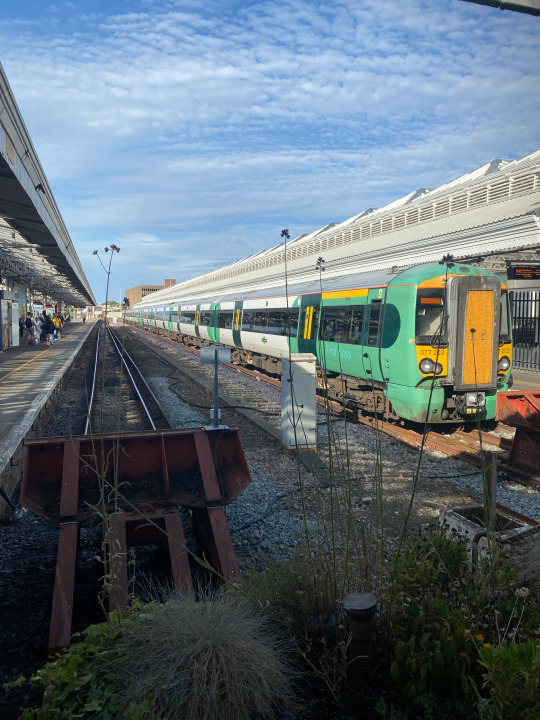
Looking at the above picture, what do you think seems like a reasonable way to delegate the various parts of running a railroad?
Well, according to the European Union, it is into an infrastructure organization responsible for tracks, signals, and so forth; and train operator(s), responsible for running train services. You may have different ideas on how best to do this, but this method seems fairly reasonable and not too complicated, right? Now, British Rail was privatized when we were still in the EU, and it was several years after Brexit when it was decided to renationalize the railroads under Great British Railways. Bearing this in mind, here is how the british railroads worked from privatization, and how they're probably going to work after renationalization.
TRAIN SERVICES: Train services are provided by the train operating companies (TOC's). There are several types of train operating companies, all run differently. Also, we're only talking about normal passenger operations, not heritage routes or freight because those work differently.
Franchised operators: different companies (often other countries' state-owned railroads) bid to run groups of services (franchises), with the franchise given to whichever one says they'll make the most money or need the least subsidies. The companies then have to do that, and if they don't make as much money as they agreed they would, they get replaced. Except this system broke during the pandemic, since it was pretty obvious no train operator was going to make enough money, and every operator's contract was just extended indefinitely. In the above picture, the operator is Govia Thameslink Railway, although they use different branding for their routes, and so this operator is Southern.
Operators of last resort: a private TOC broke its contract or otherwise messed up badly enough that the government stepped in and renationalized that service (as a last resort, of course). These services are run by either the Department for Transport or by the Scottish or Welsh government. There's quite a lot of them, since it turns out the companies bidding for franchises often had extremely unrealistic ideas of how much money they'd make, and were also quite bad at running services. Southern, despite being among the worst-ranked TOC's for passenger satisfaction, has been operated by the same company since 2001.
Open-access operators: a private company thinks it can make some money running trains, so they lease some trains, pay for track access, and then do that.
Under Great British Railways, once all of the private companies' contracts expire, they'll be run by the government as a part of GBR. The operators of last resort will continue to be owned by the government, and the open-access operators will be left alone.
TRAINS: The trains themselves are not owned by the TOC's, they are owned by the Rolling Stock Operating Companies (or ROSCO's), which then lease them out to the TOC's. In the above photo is a Class 377 leased by Southern and owned by Porterbrook. One issue here is that the open-access operators are competing with the other TOC's for use of the trains, which causes problems with the availability of rolling stock. The ROSCOs don't really add anything to the railways, and as far as we know there are no plans to renationalize them.
INFRASTRUCTURE: The right-of-way, tracks, signals, bridges, tunnels, and so on, are owned, upgraded, and maintained by Network Rail (although sometimes these are contracted out). We're a government body (exactly what sort we aren't sure) and aren't expected to make money. This wasn't always the case, since initially a private company (Railtrack) did everything we do, but they did such a terrible job that they caused several fatal derailments, and were renationalized to be replaced by us. Once GBR is established, we're going to be merged into it (the EU can't stop us anymore, we can have the trains and tracks run by the same organization! that's what brexit was for, right?)
STATIONS: All stations in the country are owned by Network Rail. However, we don't actually manage most of them, and instead one of the TOC's does (usually one that services that station, but not always). We do manage the biggest stations, such as the various London terminals and Birmingham New Street. As mentioned before, that'll become GBR's job once it exists.
There, now you should understand how Britain's railways work (until renationalization anyway). Except for freight services. And TfL's network. And the various other metro, light rail, and tram services around the country. But that's good enough. Now use your knowledge to know who to blame when your train is delayed (hint: it's never Network Rail. Unrelated, whoever's responsible for delays has to pay the passengers compensation.)
7 notes
·
View notes
Note
for the spotify wrapped ask game:
8 / seifer almasy (your choice if squall is there too I know they tend to come in pairs)
thanks in advance from your fellow seifer almasy enjoyer
8. Hozier - Empire Now
Months after the war, while everyone is distracted rebuilding or being court martialed in SeeD tribunals, Seifer Almasy disappears.
His two closest friends deny having any knowledge of his location. Balamb Garden, having washed their hands of him after his failed examination and subsequent defection, do not bother sending search parties after him--in fact, Commander Leonhart explicitly discourages the idea: it would, in his own words, "be a waste of resources". He has, after all, already been put on trial and pardoned.
It takes a few weeks, but eventually people forget about it.
Some time later, the Forest Owls make themselves known again. Political journalists across the continents present it as a given: with their occupiers weakened by previous conflicts and internal struggles, the time has never been more right to push a more intense offensive.
SeeDs keep an interested eye on the proceedings: if a civil war broke out, it would mean an uptick in the demand for mercenaries, and their coffers could use the boost after their rebuilding efforts. None but the most politically curious among them pay it much attention beyond that.
The Timber separatists throw themselves back into their fight with renewed vigor--and viciousness. Firefights erupt across the country. Rail networks are sabotaged. Those actions are noticed, but it takes time before anyone starts to notice the change.
First it's the people on the ground, those who clean the rubbles after a riot, those who pick up their local newspaper and see unrest plastered on the front page. Then it's those political scientists, those with their finger on the pulse of Galbadia-Timber relations. Timber citizens start to speak of revolutionaries; Galbadians, of terrorists.
And then the new President-elect's car explodes in a ball of fire, and they all start to speak of war.
Word on the streets says: it's different, this time. It might actually stick. In Galbadia, war rooms shake with the same roar: who's leading this? Who do we have to kill to stomp them back down? Whispers in Gardens wonder: was that para-magic? Has anyone been contracted by Timber, who's working on this?
And commander Leonhart doesn't answer, but he could. Without a single word, in fact. He'd only have to gesture at the gun safe in his office where he used to keep Hyperion, and the drawer in his desk where Rinoa's contract used to be: assistance, until Timber gains its independence.
Which won't be long, now, if he had to hazard a guess. It's almost a shame: war is very good for business.
#asks#queerasnix#writing#spotify wrapped#funnily enough i've been thinking about The Guys again lately#seifer... he is so beloved. To Me.#anyway seifer isn't very present in this snippet but he's Out There for sure#sure retirement is nice for him but what if he became a revolutionary leader. what if he made up for his crimes by liberating timber#what if he blew up a bunch of people#for enrichment
6 notes
·
View notes
Text
The U.K. government’s new transport minister got an award-winning railway engineer sacked for speaking to the media about safety concerns at one of Britain’s busiest stations, POLITICO can reveal. In his previous role running government-owned infrastructure manager Network Rail, Peter Hendy threatened to withhold public contracts from the man’s employer while urging disciplinary action — and asked officials to “deal with him.” Hendy was angered after the engineer, Gareth Dennis, told a journalist that overcrowding at London’s Euston station was “unsafe” because it could result in a crush — despite concern also having been voiced by the official rail regulator.
Continue Reading
10 notes
·
View notes
Text
If you ever feel like you don't deserve where you are right now, remember that Network Rail, an organisation that very infamously can't build high speed rail in the UK, has a consulting contract on California HSR
26 notes
·
View notes
Text
An introduction to rolling stock VR operates for other owners, part 2: TRO X34
And now for something completely different: a tram! In addition to the Sm5 units we operate for JKOY, we also operate all the trams of the Tampere tramway.
The Tampere tram system is Finland's newest tram system, opened in 2021, with one extension opened in 2023, and another due to open in 2025. As rolling stock, the city-owned Tampereen Raitiotie Oy opted for a developed version of the Finnish-built Škoda Transtech X34 tram, which had previously been built for the Helsinki tram system.

TRO04 with the Kaleva church in the background. My photo.
Although the units built for Tampere share the same type designation as the Helsinki trams, X34, the Tampere units are longer, wider and have different track gauge (the Tampere system is currently the only standard-gauge, aka 1435 mm gauge, rail network in Finland). The exterior design is also different, with a brick-red styling from the local designers IDIS.
The Tampere X34's have a capacity for 264 passengers per unit and a service top speed of 70 km/h (actual top speed is 80 km/h). Twenty trams have been delivered to date, with six more due for delivery for the next extension in 2025, and TRO has an option for 40 additional units for future extensions of the system.
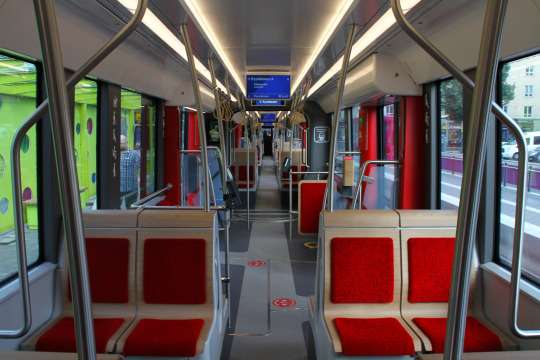
Interior of TRO15. My photo.
VR was awarded the contract to operate all TRO trams for the first ten-year period from 2021 onwards in 2019. Hopefully, with the good work we do, we'll get the next ten-year contract too!
28 notes
·
View notes
Text
so the party manifestos won’t be published for a few weeks prolly, but the Labour Party policymaking system means they have an internal “policy platform” agreed by the partisan structure that kinda dictates what goes in the manifesto, and a similar partisan structure has the final say on the manifesto itself. the platform is private and internal, but it’s been “seen and summarised”. so heres a couple of interesting bits:
nationalise the rail; allow greater municipal ownership of bus networks; more ev charging stations and increased ev subsidies
“fundamentally reform our system of energy supply, generation and transmission” via public ownership, but without stating whether or not this includes consumer services or if the private wholesale system will continue
abolish the Lords; votes at 16; NO commitment to abolishing FPTP
“support the recognition of” palestine (note wording, and note the fact this was written before 7 october)
ban conversion therapy including for trans people; “modernise the process of gender recognition to remove indignities for trans people, while upholding the Equality Act, its protected characteristics and its provision for single-sex exemptions” (obviously using terf dogwhistles to get out of meaningfully reforming the law, without clarifying their plans)
sewage monitoring and fines for sewage leaks by water companies – water remains private
“land-use framework” to organise farmland with the goal of biodiversity, close hunting loopholes
intellectual property reform, maybe? they’re very vague about that one
one-month waiting time for mental health services
“reform broken tuition fees system” – NO commitment to abolition and debt forgiveness, only this squirmy line
“robust regulation to protect people from online harms” – basically equivocating to allow any possible passage of a bad internet bill :/
£28B green energy investment; double onshore wind, quadruple offshore wind; reinstate fracking ban and stop new oil/gas; “green energy by 2030”, whatever that means. weirdly fetishistic about hydrogen power
VERY, VERY little mention of City oversight and reform. City to remain extremely independent, capital to continue flowing
abolish leaseholds; end ‘arcane’ land laws; end no-fault evictions
football regulator; reform gambling laws
end fire-rehire; more regulation for two-tier employee/contractor workplace inequalities; more statutory workers’ rights; ban zerohours with more than 12h/week, “right to a contract”; change the minimum wage quango to account for cost of living, potentially hiking the minimum wage by several pounds
repeal a number of union-busting acts; regulate gig economies to statutorily allow the right to unionise; increase rights for unions to organise and manage themselves
ethics quango to enforce the ministerial code for the first time in its history; ban second jobs for MPs with very limited exceptions for professionals; ban former ministers from lobbying for five years; political finance reforms to restrict financing by shell companies
certain devolutionary powers for english local authorities on request; shrink whitehall, let the civil service go elsewhere
“respect orders”, ASBOs 2; domestic abuse register; misogyny as a hatecrime; ‘protect the right to protest’, explicitly opposing the public order bill without committing to overturn it
but yeah, the starmer leadership may leave some things on the cutting room floor, and the starmer government may act totally different when it doesn’t have the partisan oversight. in the end, we have to wait until the proper manifesto releases to make real judgements, but looking through this list can set the tone of our expectations: third-way, boring and pathetic
8 notes
·
View notes
Note
Sydney Trains T set
Class of electric train operating in Sydney, Australia
The T sets, also referred to as the Tangara trains, are a class of electric multiple units that currently operate on the Sydney Trains network. Built by A Goninan & Co, the sets entered service between 1988 and 1995, initially under the State Rail Authority and later on CityRail. The T sets were built as "third-generation" trains for Sydney's rail fleet, coinciding with the final withdrawals of the "Red Rattler" sets from service in the late 1980s and early 1990s. The Tangaras were initially built as two classes; the long-distance G sets and the suburban T sets, before being merged after successive refurbishments.
Quick Facts T set, In service ...
Design
Vestibule
The Tangara is a double-deck four-car set, with the two outer cars being driving control trailers (carrying a D prefix) that are fitted with one pantograph each and the middle two cars being non-control motor cars (carrying an N prefix). All sets are equipped with chopper control.
Unlike most other Sydney Trains rolling stock, the seats on the suburban T sets are fixed, meaning that half the seats face backwards. Former G sets, however, do have reversible seats.
History
Initial delivery
In July 1986, the Government of New South Wales awarded A Goninan & Co a contract for 450 carriages. In 1993, it was decided that the last 80 carriages of the order would be built to a modified design to operate peak-hour services to Wyong, Port Kembla and Dapto. In 1996, five spare driving trailers were ordered.
The Tangara name is of Aboriginal origin, meaning to go.
Two subclasses of Tangara were built, the suburban sets targeted as T sets, and outer-suburban sets originally targeted as G sets. The T sets replaced the first generation of Sydney's electric rolling stock.
The G sets differed from the T sets in originally having manual door buttons, high-backed reversible seats, toilets, fresh water dispensers and luggage racks. Additionally, the G sets were delivered with a revised design at the front and rear of the train, notably an angular cutout in the bottom of their noses. Additionally, the pinstriped grey panels below the cab windows were replaced with light orange panels for improved visibility. All T sets have a number plate below a hundred while all G sets are numbered at or above
T sets
G sets
Original liveries
The first train (set T20) was unveiled at Sydney Central in December 1987, heavily promoted as the "train of the 21st century", operating a promotional service on 28 January 1988 targeted as TAN1, and entering regular service on 12 April 1988. The final T set (set T59, formerly T92) was delivered in February 1994 and the final G set (set T100, formerly G32) in October 1995.
The cars built were:
T set driving trailer cars: D6101-D6284 with additional spare cars D6285-D6289
T set non-driving motor cars: N5101-N5284 with additional spare car N5285
G set driving trailer cars: OD6801-OD6840 with additional spare car OD6841
G set non-driving motor cars: ON5801-ON5820
G set non-driving motor cars with toilet: ONL5851-ONL5870
Set G7 was fitted with an AC drive system for evaluation purposes with the existing DC stock and compatibility with signalling and communication systems on the network. G7 was scrapped in 2005 at Maintrain, Auburn after the Waterfall rail accident, as all four cars were beyond repair.
Upgrades in the early 2000s
Original interior
First refurbishment
When first introduced, the T sets were fitted with passenger door release handles to prevent loss of air conditioning at stations. These were later disconnected (and later removed) due to passengers not getting used to opening the doors for themselves when needed. The seats originally had fabric upholstery, but this was gradually replaced by blue vinyl.
In the early 2000s, all Tangaras were updated with a new CityRail corporate appearance. This involved painting the passenger doors and much of the front and rear ends of the trains yellow. Blue and yellow stripes along the bottom of the carriages were replaced by a single yellow stripe and updated CityRail logos were placed on the driving cars.
In late 2005, 15 V set carriages were suddenly withdrawn due to the discovery of corrosion in their underframes. G sets began to operate more off-peak Intercity services to Port Kembla, Kiama, and Wyong to cover for the withdrawn V sets. H sets started entering service in December 2006. The newer trains feature a very similar level of passenger amenity to the G sets and can be seen as a continuation of the design. Their introduction lead to a change in the role of the G sets. From 2007, the G sets were progressively redeployed to suburban services, providing extra capacity on high-demand existing services such as on the Western line and allowing new services to be introduced. By 2008, G sets were often used on peak suburban services that extended into intercity areas, such as services to Springwood (via the Western line).
Conversion of G sets to T sets
A converted G set
In 2009, the conversion of G sets to T sets began, to improve their suitability for suburban working as H sets took over their outer suburban duties. Conversion work consisted of the removal of toilets and their replacement with additional seating. Other work included the installation of new handrails and hangers and the recoding of cars and sets. The carriage numbers were kept, however the O (outer suburban) prefix was dropped. OD became D, while ONL and ON became N. The set numbers were reclassified from G1-30 to T100-130. G4 was the first to be converted (into T104). In 2010, sets being converted started receiving a full interior refurbishment as part of the program to refurbish all the Tangara carriages. In 2018, sets T14 and T121 (ex G21) both became mixtures of T set and ex-G set carriages, with both sets swapping two carriages with each other.
Upgrades in the 2010s
T sets
Ex-G sets
Second refurbishment
In 2010, a refresh of the Tangaras commenced with the interiors repainted, and new seating upholstery and handrails fitted.
In July 2013, Sydney Trains trialled rearranging the seating on the upper and lower decks of two carriages. There were 16 fewer seats per carriage; 3x2 seats were replaced by 2x2 seats in one carriage (N5134 on set T78) while in the other carriage (N5131 on set T77) there are double seats on one side and a bench style seating on the other. Both carriages were later returned to the normal 3x2 arrangement.
In 2014, phase one of a technology upgrade program, aiming to improve reliability and upgrade ageing components, was underway. A contract for phase two of the program, aiming to extend the life of these trains and bring technology into line with newer trains was awarded to UGL Limited in August 2015. This was expected to be completed by July 2018. The expected completion date was revised to 2019, however as of February 2023 only 2 sets have entered service with the second phase upgrades.
The first phase of the program involved upgrading the passenger doors to cut down on vandalism, as the steel panels on the original doors were prone to being kicked out by vandals. The door kicking incidents often led to unnecessary delays as the guard had to lock off the affected carriage. The new lightweight passenger doors have a similar design to the doors on the M sets. This phase of the project was completed at the end of July 2016. The first set to receive the new doors was T96, in October 2014.
The second phase of the program was initially set to include destination indicators and digital voice announcements, which were installed in T72 and T106, were not installed in other sets due to delays and issues with the DVA system. The upgrade still went ahead however, with vestibules given modifications including marked priority seating and Automatic Train Protection (ATP). The first sets with this revised phase 2 upgrade, T52 and T73, re-entered service on 12 November 2021. As of 26 February 2022, sixteen sets have entered service with the upgrade.
The program includes overhauling air conditioning units, Static Inverter upgrades, and modifications to the Driver's desk/cab.
Other anti-vandal improvements included the introduction of 'Mousetrap' sensors. Trialed in 2015, these sensors are able to detect vapors from strong permanent markers and spray paint; triggering an in-built camera feed which is relayed to Sydney Trains staff as well as the Police Transport Command. They were then installed in most converted G sets.
Service
Lines serviced
The Tangaras usually operate on the following lines:
T1 North Shore & Western Line: Emu Plains to City via Parramatta, City to Berowra or Hornsby via Gordon
T4 Eastern Suburbs & Illawarra Line: Bondi Junction to Waterfall & Cronulla via Hurstville & Sutherland
T7 Olympic Park Line: Lidcombe to Olympic Park
T9 Northern Line: Gordon to Hornsby via Strathfield
South Coast Line: Waterfall & Thirroul to Port Kembla
Since 2013, their operation on Sector 2 has ended timetable services with all of them being displaced to Sector 1 since A sets do not operate on that sector.
Incidents
Wentworthville derailment
Driving trailer car D6127 and motor car N5127 were both involved in the Wentworthville train derailment on 27 December 1989, the first major accident involving the Tangara fleet. D6127 was written off, having collided with the platform. N5127 was sent to Dunheved on the Ropes Creek line for training fire fighters, along with S Set car C3866.
Vineyard collision
On 10 February 1994, set T99 travelling from Richmond towards Blacktown collided with a van at the level crossing at Vineyard. The first 3 cars derailed in a zig-zag format, starting a nearby grassfire.
Unanderra derailment
On 24 January 2009 at 2:35 AM, set G4 (now T104) was departing from Unanderra towards Wollongong and derailed due to the train passing a signal at Danger, and the catch-points derailing the train to avoid a collision with a freight train. The first 2 cars and the front bogie of the third car derailed and stopped safely 50 metres from the signal. Subsequently because of this incident, G4 was the first G set to undergo conversion to suburban T set T104.
Carriage pierced by guard rail
During evening peak on 15 January 2014, motor car N5222 on set T10 was pierced by a guard rail near Edgecliff railway station while on a service to Cronulla. Issues with the train were already developing on the previous run, triggering wheelslip sensors on the train multiple times. As the train entered the Eastern Suburbs Line, a strong burning smell was reported at several stations. It was later revealed that an incorrectly repaired axle on N5222 led to the force of the 440-tonne train picking up the piece of guard rail.
Kembla Grange derailment
On 20 October 2021 at 4:09 AM, Tangara set T42 derailed near Kembla Grange station on a level crossing. It was caused by a motor vehicle that was stolen and driven up the rail corridor near the railway crossing. Car D6212 fell onto its side and car N5212 also derailed, while cars N5211 and D6211 did not derail and only had minor damage. There were no serious passenger injuries or deaths as a result of this incident, however two passengers, as well as the guard and the driver, were hospitalised to be checked. The Driver was badly injured during the rollover of the Driver trailer carriage. T sets usually don't operate through Kembla Grange, however due to industrial action on the day of the incident banning the usual H sets, they were used.
4D
4D at Spencer Street
Main article: 4D (train)
A train bearing strong resemblance to a Tangara, known as the 4D, was built by A Goninan & Co in 1991 for the Public Transport Corporation. Although outwardly similar to the Tangaras it was mechanically very different being built to be compatible with the Comeng trains operated in Melbourne. It was included in the sale of Hillside Trains to Connex Melbourne in August 1999. It wasn't successful and after spending large periods out of service, being withdrawn in December 2002 and stored at Newport Workshops. The 4D was bought by CityRail for parts and then scrapped in March 2006 by them at Sims Metal, Brooklyn, Victoria. The G sets' cab ends have a design similar to the 4D, with the bottom part being bent inwards.
Notes
Former G sets are 81.21 m (266 ft 5 in).
Former G set cars are 20,385 mm (66 ft 11 in).
Former G set cars are 53 t (52 long tons; 58 short tons).
Former G set cars are 45 t (44 long tons; 50 short tons).
This person sent the same ask 3 times in a row and I read all three just to make sure they were all the same
yay train facts! I have a fun train fact: they are very yummy to eat 😋
12 notes
·
View notes
Text
Private Sector Good, Public Sector Bad?
The reigning ideological economic theory within the Conservative Party is, and has been ever since Margaret Thatcher came to power, that “markets know best”
This was made abundantly clear when Kwasi Kwateng, the Chancellor of Liz Truss’s short-lived government, dismissed anything resembling a “planned economy”. Rather, growth and economic success depended on:
“…the power of our treasured free-market economy to leverage private capital and unleash Britain’s unique entrepreneurial spirit to grow new industries." (The Conversation: 13/04/22)
The key words here are “to leverage private capital”. What this means in ordinary speech is to encourage private investors to participate financially in “projects that benefit the economy, society or the environment”. This has resulted in private investors running (and in many cases, owning) most of our public utilities and services. But rather than “benefit the economy, society and environment" these private investors have devastated it.
Over the next few blogs I intend to look at various British/English public utilities and services and to see how they have fared under the private sector. First up are the railways.
Britain’s railways are organised within a mishmash of private and public ownership, and has been described as “broken" and no longer fit for purpose.
“The UK's train network is not only one of the worst in Europe, it is also one of the most expensive.” (euronews: 20/05/21
This is no surprise given its complex and chaotic structure. The railway tracks and rail network are owned and operated by Network Rail, which is a “non-departmental public body of the Department for Transport, (DFT) with no shareholders"
Non-departmental public bodies are a strange entity. They are national or regional bodies that work independently of government, are not staffed by civil servants, and yet are still accountable to government ministers. It is the Secretary of State for Transport who sets the strategic direction of the railways, allocating funding, and it is the secretary of state who has to approve major investments in the railway system.
The companies that operate the trains are privately owned and are either awarded franchises from the DFT, or they are “open access” operators that provide passenger services on a particular route or network, but with no exclusive rights enjoyed by franchise holders.
To complicate matters further, the actual trains, passenger carriages and railway wagons, known collectively as “rolling stock”, are owned by the rolling stock leasing companies” (ROSCOs) who lease out their stock to the privately owned rail operating companies.
Freight train operators are totally separate from passenger trains, have no contracts with government but do need permission from Network Rail to run their services.
For year 2022/23 the railways received £11.9bn of government funding and Network Rail has secured £27.5 bn of government funding over the next five years. In short, we the taxpayer invest heavily in our rail network which the private passenger, rolling stock and freight companies use to make a profit.
A 2019 report by the TUC found that:
“Rail firms have paid over £1bn to shareholders in the last 6 years.” (TUC: 02/01/2019)
In 2022 Avanti West Coast received a taxpayer subsidy of £343m, despite having the worst punctuality record amongst train operators and paying out £12m to its shareholders. Avanti West Coast is owned by First Group, who also own Great Western Railway and South Western Railway. Great Western paid out the largest dividend in 2021/22, £33m, while South Western paid out £13m.
More recently:
“UK rail operator Govia awards $79m in dividends amid UK rail dissatisfaction.” (Railway Technology: 08/01/24)
Govia is largely foreign owned, the three largest shareholder companies being Australian, Spanish and French. In 2022 it was fined £23m “over financial irregularities" having failed to return £25m in taxpayer funding. Why on earth any government would want to go on subsidising such a company is beyond understanding, especially as the Transport Minister at the time said the company had:
“…committed an appalling breach of trust...behaviour was simply unacceptable and this penalty sends a clear message that the government, and taxpayers, will not stand for it." (BBC News: 17/03/22)
Clearly the minister (Grant Shapps) didn’t mean what he said as Govia is still operating trains two years later and still courting controversy
Turning to the train-leasing companies, we find:
“Profits of UK’s private train-leasing firms treble in a year. More than £400m paid in dividends in 2022-23 while rest of railway faced cuts and salary freezes.” (Guardian: 18/02/24)
These companies saw their profit margins rise to 41%, a profit that we as taxpayers and passengers pay for. It is estimated that "taxpayers are now effectively paying the £3.1bn spent last year on leasing trains.” To actually run a passenger rail service yet not own a single locomotive or passenger carriage is bazaar to say the very least.
Finding overall profit figures for freight train operators is a little more difficult but Colas Rail UK’s revenue in 2022 was £15,529m, up 17% on the previous year, an operating profit of £460m.
Overall, taxpayer subsidies to the rail industry run at £6bn per year. However, these massive subsidies have not led to lower fares, an end to over-crowed trains, or an efficient service. According to TaxPayers Alliance 02/01/23) "rail subsidies cost taxpayers £1300 each by March 2023.” Meanwhile the private companies that operate the highly fragmented and disjointed system continue to reap profits and pay out dividends.
Maybe this would not be so bad if the British taxpayer subsidised dividend payouts went to British owned companies, but this is far from the case:
“According to the Rail, Maritime and Transport Union, 70% of Britain’s railways are now under foreign ownership to some degree.” (CityA.M.: 11/01/17)
The figure of 70% foreign ownership is disputed, not least because some companies have gone bust since 2017, with five lines now being effectively run by the government as “operators of last resort.” As the 1993 Railways Act forbids the UK state from running the railways these lines are likely to be franchised out to private firms in the future.
“…many foreign state-owned enterprises of the Netherlands, Germany, France, Italy and Hong Kong now run rail franchises in the UK." (The Standard: 11/05/23)
While other countries have no philosophical problem with running railways for the benefit of their citizens, and clearly have no qualms about investing state money in foreign ventures, the Conservative Party is ideologically opposed to state intervention in running UK public services and is vehemently opposed to setting up a UK sovereign wealth fund.
In summary, successive Tory governments have continued to pay taxpayers money into the coffers of private enterprise regardless of how efficient, honest or effective these firms are at providing an essential public service. Clearly, where the railways are concerned, they are not run to “benefit the economy, society and environment" but for the benefit and interests of private investors, in the mistaken Tory belief that private enterprise is always better than public stewardship despite evidence to the contrary.
#uk politics#rishi sunak#Trains#franchise#leasing network rail#taxpayer money#profits private enterprise#inefficient#expensive#p
9 notes
·
View notes
Text
THE RECKONING IS UPON US
The year is 2025. You live in California, the largest city in the world. A few years back, Silver Spring B&E Transport electrified its entire network, apart from a few steam locomotives they've been keeping around just 'cause; while a Transport continues to be more of a shipping company and slightly dangerous airline than a train company (at least in your city). Over the last year, though, things have seemed a bit different; SS B&E has begun "rationalizing" –cutting any services that don't make money– in preperation for what they're calling "Victory Year," but doomsday preppers are calling "THE RECKONING."
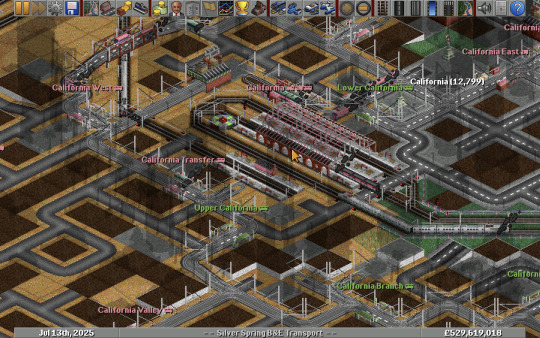
One day, when heading to work, you see a large crowd gathered around the station. Worrying that your train has been rationalized, you try to see what's up: it seems a UFO has landed right in the center of the world's largest city. Silver Spring B&E insists that it's fine, the aliens probably just want to talk, and there will be no service changes whatsoever –after all, if the aliens want to take the train anywhere they should be able to, right?
Satisfied that everything seems under control, you turn around and head back on your way to work. Then, you see a fighter jet pass overhead, and hear a massive explosion from downtown. In the ensuing chaos, you learn government bombed the UFO, killing hundreds of people and destroying the tracks outside the station. SS B&E hastily rebuilds the railroads, offers "thoughts and prayers" to those affected by the destruction, and tells the public that this is why they should support small government.
However, not all is well – it seems that a Transport managed to sneak in and build some tracks obstructing part of California's main station. CEO M. N. McAlpine of SS B&E is furious, and announces that the company is immediately going to get "revenge" and signs a contract with the city for a transport monopoly. They don't stop there though, and start signing deals with every major city in the world for exclusive transport rights. a Transport announces they plan to retaliate, and start signing contracts with other cities.
A few days later, when you are reading the paper on the way to the funeral of your best friend (who died when the government bombed that UFO – strange nobody's really mentioned that aliens exist since), you see the city council has changed their minds on the transport contract: now, a Transport has a monopoly, and you notice the city council has some very expensive looking new suits, watches, and a private jet. For official trips only; obviously. You also see that a couple other cities have changed their contracts over to a Transport.
Silver Spring B&E then begins their retaliation, but they don't start in California. You hear from a friend over in Bensville that their streets are being ripped up and rebuilt, and it seems that eternal roadworks are happening all across the world. But the worst is yet to come: one day, after hearing several explosions, you turn on the news to see CEO McAlpine in front of a collapsed building, looking rather pale and holding an umbrella, despite the sunshine. She then announces to the city that SS B&E was responsible for multiple terrorist attacks that day, and that the killing will continue until the city breaks the contract with a Transport. The city council hastily agrees to drop a Transport's contract, and soon signs a new one with SS B&E, along with acquiring a second private jet.
The actions of both companies shocked you – even their brief fight over contracts in 2002 wasn't this bad, didn't kill anyone, and stayed in California. If anything, you had though CEO's a (that's their full name) and McAlpine had gotten along pretty well ever since they both founded their companies back in 1900 (they both look quite young for their age –how do they do it?). With rubble a much more common sight on the streets, corporations taking cities hostage, and the government blowing up UFOs –which apparently also happened on rail junctions in the middle of nowhere, too?– you're starting to get the sense that the doomsday preppers may be onto something.
As 2026 draws closer, things seem to return to normal for a few months: SS B&E gets new contracts with California's suburbs of Chillum and North Kensington; one of their steam locomotives gets sent to a farm upstate; and a Transport begins modernizing its ancient fleet (some of their locomotives were from the 1950s!), with CEO a stating one night that it was "embarrassing" to have such old trains still around for "Victory year," and that California was also going to get endless roadworks out of spite.
Soon, new year's eve rolls around, and at the celebrations, you see both CEOs looking excited for the new year –"Victory year," as they've been calling it– while both having a drink of something red. As the ball drops, the awards ceremony begins, although what is being awarded you aren't sure. Soon, though, your question is answered as both CEOs are presented with big trophies, and proclaimed to be the "Tycoons of the century." It's a bit weird, but they have both been very good at their jobs (in spite of the last year) over the last hundred and twenty-five years.
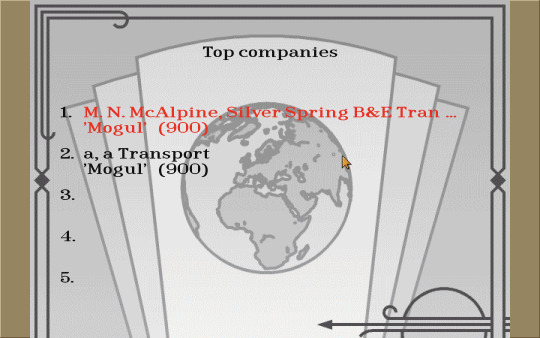
The next morning, you wake up, open up your phone, and see the news about the awards again. You start making yourself breakfast, thinking that "THE RECKONING" hasn't come to pass, when suddenly UFOs drop out of the sky, and announce that they're here to pick up CEOs a and McAlpine. The UFO just south of California – over Silver Spring, where SS B&E's headquarters is – emits a beam of some sort, and then flies off into space. Then, the aliens announce that they tried to introduce themselves peacefully, but the government kept killing their diplomats, even when they landed in the biggest city in the world, so they have no choice but to begin THE RECKONING. Laser beams suddenly erupt from the UFOs, tearing the city apart. You survive the first wave, but already the aliens are opening fire again. Looking around, you realize it's the end of the world, with buildings collapsing, the ground melting, smoke blotting out the sun, and it isn't long before your building falls into a lava-filled sinkhole, taking you with it.
THE END
(Silver Spring B&E Transport played by me, a Transport played by @cosmos-dot-semicolon)
#bad openttd ideas#openttd#story#you see the game end year was 2025 so obviously once we stopped playing that world would end#also if it wasn't clear both CEOs are vampires#it seems that OpenTTD takes place in some sort of libertarian “paradise” where the central government does nothing except bomb aliens#local governments do all of the governing but they are regularly bought by massive corporations that do basically whatever they want
5 notes
·
View notes
Text
character essay: topaz from honkai star rail
strap your seat belt in, we're going for a ride.


topaz is a debt collector.
now you may start thinking: did belobog commit a tax fraud? if so, how? i thought this was a very interesting thought process. because have you ever considered interplanar debt or financial settlements in sci-fi media? unless if they were sky pirates or very simple transactions of sale and purchase - it is often not explored and perhaps, most might even consider it not interesting.
for those who played the game and dedicated their time to the events, you'll find and agree that the influence of the interastral peace corporation (ipc) is wide - considering they hold a stake in an underused freight vehicle for the aurum alley business event. the ipc was also painted as calculating, for wanting to take back not only the freight vehicle, but any semblance of a bustling city. the ipc is a capitalist loaning body, driven by its "philanthropy", until it's time to reap the benefits."
when topaz walked into the story, that painting proves to have more details - more than just freight vehicles, the ipc could do more than just assistance in business, but repairing an entire planet.
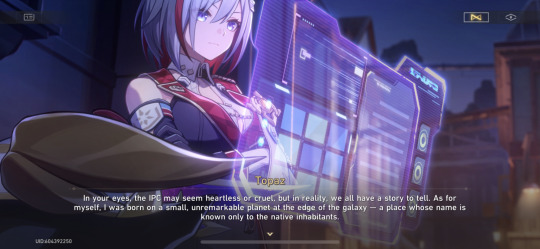
topaz's exterior personality leaves readers with quite literally no hint to who she is or where is she from, aside from her love for animals, but playing the story leaves you to find out that she came from a heavily polluted planet that the only choice left was to leave everything to the ipc. however, it was also because of this upbringing and story that topaz would prioritise survival, more than its people's freedom. after all, protection from natural disaster as well resource allocation for a planet's rebuilding is a tempting deal - especially for belobog, that had only recently been cleared from its stellaron crisis.

not only that, belobog had also borrowed funds from the ipc prior to the planet's isolation from the rest of the world due to its extreme weather. the contract topaz offered to rebuild belobog and employ its citizens under the ipc would clear the arrears owed for over seven centuries.
despite the ipc's opportunistic nature as a body, topaz came to belobog and spoke to bronya with unmatched sincerity. topaz was a character that did not come from a privileged place, yet took the steps to dance alongside the work opportunity she was provided with. even if the contract offered by the ipc was tempting, even she was amazed by the thriving spirit of belobogians, looking toward a future with their intelligence and enduring the coldest blizzards. she could no longer compare the environment between jarilo-vi and her home planet.

despite having objectively failed her mission, she was humble, and did not assert her task more than necessary. if this was what the people of belobog wanted, then she would not force it upon them.
which comes at the cost of her current position, and she was demoted by one rank. even so, she still found beauty on this planet.
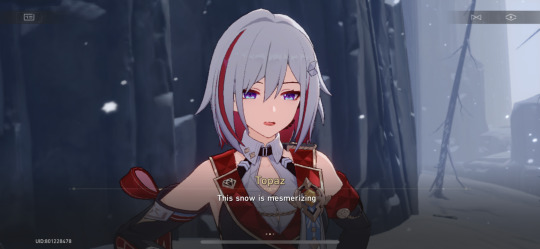
as a character, one would assume that her position meant she was always out for money, but she herself said that she was past working for the money, and thus did not mind the pay cut that came with her demotion. but more than that, she maintains a headstrong personality through it all - a marketing expert who knew how to use her story to resonate with potential clients, yet endearing for her love of animals.
she is also noted to be very capable and places the interest of the planet's ahead of work - the probability of success among her planet projects stood at 80%, higher than the ipc's average of 60%.
topaz is a multifaceted businesswoman: friendly with her network, assertive with her staff, a marketing expert and most of all, good-natured. as an experienced businesswoman, her story clashes at the differences in culture and ideals against bronya, a fresh-faced leader trusted by her subjects.
this blog entry was originally posted on stormofblood.
11 notes
·
View notes
Text
Bitcoin: The Dawn of a New Digital Age

Throughout history, transformative technologies have reshaped society by dismantling barriers and expanding human potential. The printing press democratized knowledge during the Renaissance, while the internet revolutionized information sharing in our time. Bitcoin represents the next step in this evolution—a technology that could fundamentally transform our financial system, though not without important challenges to consider.
The Current Financial Landscape
Today's financial system faces significant challenges. In Venezuela, where inflation exceeded 200% in 2023, citizens watched their savings evaporate within months. In Lebanon, banks imposed strict withdrawal limits during the financial crisis, effectively trapping people's money. Meanwhile, approximately 1.4 billion adults remain unbanked globally, unable to access basic financial services due to geographical, economic, or political barriers.
Bitcoin's Practical Solutions
Bitcoin offers concrete solutions to these challenges. During Venezuela's hyperinflation, thousands of citizens converted their bolivars to Bitcoin, preserving their purchasing power despite the national currency's collapse. In Afghanistan, where women face restrictions on banking access, organizations like Code to Inspire have used Bitcoin to pay female programmers, circumventing traditional barriers.
The technology's core features enable these solutions:
Decentralization: No single entity can freeze accounts or block transactions.
Programmability: Smart contracts enable transparent, automated financial services.
Borderless nature: Transfers work the same whether sending money across the street or across continents.
Fixed supply: The 21 million coin limit provides a hedge against inflation.
Real-World Impact and Adoption
The adoption of Bitcoin as a practical tool is already showing promising results:
El Salvador's Bitcoin adoption has enabled faster, cheaper remittances for its citizens.
The Lightning Network processes millions of small Bitcoin transactions daily, with fees under a cent.
Companies like Strike are using Bitcoin's rails to enable instant, nearly free cross-border payments.
However, significant challenges remain:
Price volatility makes Bitcoin a risky store of value in the short term.
Energy consumption of Bitcoin mining raises environmental concerns.
Technical complexity creates adoption barriers for many users.
Regulatory uncertainty in many jurisdictions.
The Path Forward
Rather than an instant golden age, Bitcoin's impact will likely unfold gradually:
Near term (1-5 years):
Continued integration with traditional financial systems.
Improved user interfaces and education.
Development of clearer regulatory frameworks.
Growth of Lightning Network adoption for small payments.
Medium term (5-10 years):
Stabilization of price volatility as market matures.
Broader institutional adoption.
More energy-efficient mining through renewable energy.
Integration with Internet of Things and autonomous systems.
Long term (10+ years):
Potential emergence as a global neutral settlement layer.
Evolution of new economic models enabled by programmable money.
Reduction of financial inequality through broader access.
Development of currently unimagined applications.
A Balanced Revolution
Bitcoin represents not just a new form of money, but a fundamental upgrade to how value moves and is stored in our digital age. While it won't solve all financial problems or create utopia, it offers real solutions to pressing challenges in our current system.
The true revolution lies not in overnight transformation, but in Bitcoin's steady empowerment of individuals. From the Venezuelan preserving their savings to the Afghan woman accessing the global economy, Bitcoin is already changing lives in measurable ways.
As we move forward, success will require:
Thoughtful development of the technology.
Balanced regulation that protects while innovating.
Focus on real-world problems and solutions.
Recognition of both possibilities and limitations.
The dawn of this new digital age isn't about blind optimism—it's about building pragmatic solutions to real problems. Bitcoin may not create a perfect world, but it offers tools to build a better one, one block at a time.
Take Action Towards Financial Independence
If this article has sparked your interest in the transformative potential of Bitcoin, there's so much more to explore! Dive deeper into the world of financial independence and revolutionize your understanding of money by following my blog and subscribing to my YouTube channel.
🌐 Blog: Unplugged Financial Blog Stay updated with insightful articles, detailed analyses, and practical advice on navigating the evolving financial landscape. Learn about the history of money, the flaws in our current financial systems, and how Bitcoin can offer a path to a more secure and independent financial future.
📺 YouTube Channel: Unplugged Financial Subscribe to our YouTube channel for engaging video content that breaks down complex financial topics into easy-to-understand segments. From in-depth discussions on monetary policies to the latest trends in cryptocurrency, our videos will equip you with the knowledge you need to make informed financial decisions.
👍 Like, subscribe, and hit the notification bell to stay updated with our latest content. Whether you're a seasoned investor, a curious newcomer, or someone concerned about the future of your financial health, our community is here to support you on your journey to financial independence.
Support the Cause
If you enjoyed what you read and believe in the mission of spreading awareness about Bitcoin, I would greatly appreciate your support. Every little bit helps keep the content going and allows me to continue educating others about the future of finance.
Donate Bitcoin: bc1qpn98s4gtlvy686jne0sr8ccvfaxz646kk2tl8lu38zz4dvyyvflqgddylk
#Bitcoin#DigitalRevolution#FinancialFreedom#FutureOfMoney#Cryptocurrency#Decentralization#BlockchainTechnology#NewGoldenAge#EconomicEvolution#BitcoinAdoption#Unbanked#FinancialInclusion#DigitalAge#Empowerment#TechForGood#financial education#digitalcurrency#finance#globaleconomy#financial experts#financial empowerment#blockchain#unplugged financial
2 notes
·
View notes